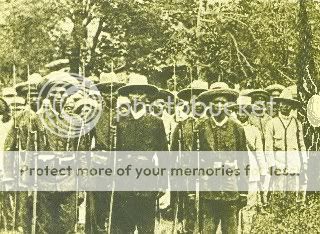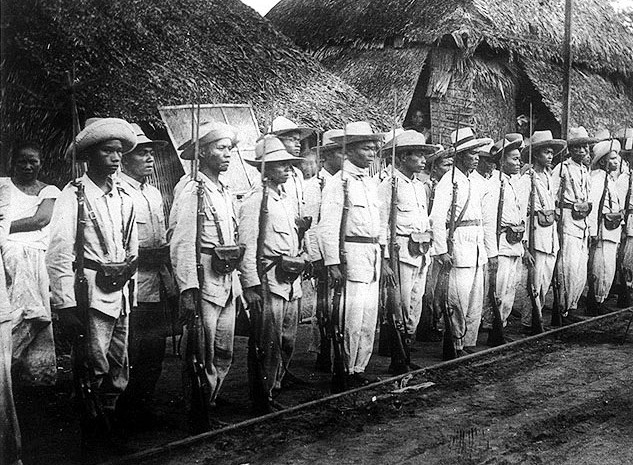Timeline of Events, 1874-80: The Second Wave (continuation)
1876
November:While the Spanish Armed Forces continued their mission in the Sultanate of Sulu, the Cortes started to draft the General Budget for the year 1877. According to the press reports, a large percentage of the proposed budget is allocated to defense and infrastructure due to the conquest of the Moro Mindanao. However, the Cortes President denied these reports; Numeriano Adriano said that while defense and infrastructure are more important due to the recent conquests, he said that its proportion on the proposed budgets will be minimal.
December: The Governor-General signed the General Budget for the year 1877. In the P$17,000,000.00 budget, while most of its priorities are still the same, the press noticed the increased spending on infrastructure and defense, due to the fact that there's still a military campaign in Moro Mindanao.
1877
January: The Cortes of the Junta General started to talk about the provisional anthem of the Junta General. Though the Frente Popular opposed the proposal due to fear, the law was passed and signed by the Governor-General immediately. The chosen provisional anthem of the Philippines was Himno de Riego; according to the said law, the lyrics were modified to adjust to the Islands. The lyrics of the anthem was published by the newspapers the day after the approval. The news even reached Spain; the liberals were amused, the conservatives were disappointed.
February-April: The Governor-General confirmed the drafting of the Basic Law of the Island in a regular meeting with the Manila press in the Malacañang Palace. Carlos Maria de la Torre said to the journalists that the drafted Basic Law will be extended to Moro Mindanao "as soon as possible". Meanwhile in the Intendencia, the deputies are discussing, analyzing and drafting the provisions of the Basic Law.
2 May: The Governor-General signed and sealed the Basic Law of the Philippine Islands at the Malacañang Palace. The provisions of the Basic Law codified some of the most important laws of the Cortes (Bill of Rights of the Philippine Islands, the Flag and Anthem Laws, laws about the Junta General itself), as well as new provisions (The definition of being a Filipino, the roles of the Junta General and the Juntas Generales). In general, it established a federal government for the Islands, and a large degree of self-government.
4 May: The Spanish Army took Jolo, the capital of the Sultanate of Sulu. This end the military campaign to take the island sultanate.
5 May: The Sultan was sent to Manila to meet with the Governor-General to sign the extended version of Treaty of Cotabato.
7 May: In the Malacañang Palace, Carlos Maria de la Torre met His Royal Highness Sultan Jamalul A'Lam of Sulu to sign the extended version of the Treaty of Cotabato. According to the said treaty, the provisions already effective in the Moro Mindanao mainland shall be extended to the Sultanate, with an assurance of forming a parliamentary government under a protectorate.
9 May: Two days after signing the Treaty of Cotabato, Sultanate Jamalul A'Lam of Sulu leave Manila in a steamboat to Jolo. Together with his entourage, he obtained a copy of the treaty.
Th Sultan of Sulu and his entourage
16 May:The Cortes of the Junta General passed a resolution that extends the already existing laws and decrees of the Islands to the Moro territories.
22 May: The representatives of the Moro leaders met with the Junta President and the Governor-General at the Palacio del Gobierno in the Old City of Manila. The said meeting was about the future of the Moro Territories. Both Joaquin Pardo de Tavera and Carlos Maria de la Torre said that aside from designating Cotabato as the capital and adapting Malay as the language of communication between the Moro groups, further details will be determined in the future.


